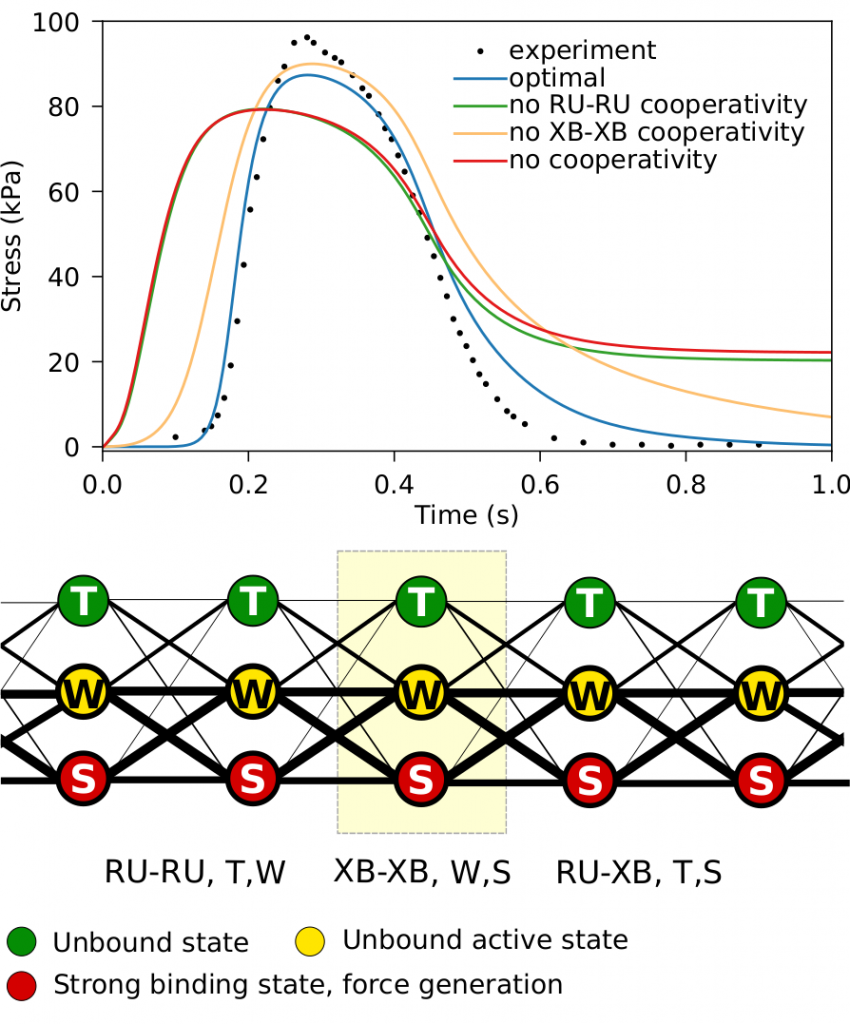Kalda M, Vendelin M
Sci Rep 2020 Mar;10(1):5530
PMID: 32218497
Full text: https://doi.org/10.1038/s41598-020-62452-7
Abstract

Strong interactions between cross-bridges (XB) and regulatory units (RU) lead to a steep response of cardiac muscle to an increase in intracellular calcium. We developed a model to quantitatively assess the influence of different types of interactions within the sarcomere on the properties of cardiac muscle. In the model, the ensembles consisting of cross-bridge groups connected by elastic tropomyosin are introduced, and their dynamics is described by a set of partial differential equations. Through large scans in the free energy landscape, we demonstrate the different influence of RU-RU, XB-XB, and XB-RU interactions on the cooperativity coefficient of calcium binding, developed maximal force, and calcium sensitivity. The model solution was fitted to reproduce experimental data on force development during isometric contraction, shortening in physiological contraction, and ATP consumption by acto-myosin. On the basis of the fits, we quantified the free energy change introduced through RU-RU and XB-XB interactions and showed that RU-RU interaction leads to ~ 5 times larger change in the free energy profile of the reaction than XB-XB interaction. Due to the deterministic description of muscle contraction and its thermodynamic consistency, we envision that the developed model can be used to study heart muscle biophysics on tissue and organ levels.